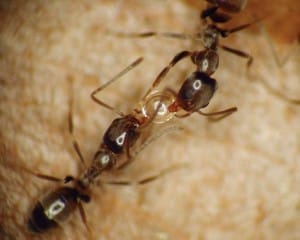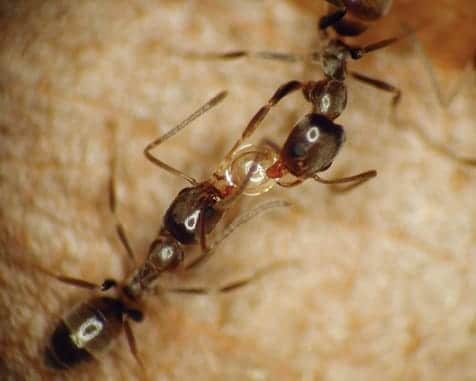Information on using bait formulations for insect control. Taken from the publication Insecticide Basics for the Pest Management Professional
Daniel R. Suiter, UGA Department of Entomology & Michael E. Scharf, UFL Department of Entomology and Nematology

See the rest of the publication at Insecticide Basics for the Pest Management Professional
Bait Formulations. Baits must be eaten by the target pest — typically rodents, termites, ants, cockroaches, and other miscellaneous pests (Figure 2). Baits are comprised of an active
ingredient incorporated into a palatable, if not preferred, food source. Bait products usually contain inert ingredients (e.g., preservatives, thickeners, gels, and fillers) intended to stabilize and enhance the shelf life and palatability of the bait. Logically, it is important that bait ingredients (actives and inerts) not be a deterrent to feeding.
Baits are most commonly formulated as ready-to-use liquids, gels, pastes, granules, dusts,
stations, pellets, and blocks. Depending on the product’s label, baits can be used both indoors
and outdoors, are generally target-specific, and are considered environmentally-friendly
because only small amounts of active ingredient are delivered, usually from a point source.
Because baits must be eaten, it is important to keep them away from non-target organisms.
To facilitate bait consumption:
- Neither the active ingredient nor any other part of the bait should be a feeding deterrent.
- The food source should be palatable (perhaps even preferred) by the target pest.
In addition, for social insect pests (especially ants) it is important that the active ingredient be slow acting. Ants and termites share food with their colony mates in a social behavior known as trophallaxis (Figure 1). Trophallaxis results in active ingredient distribution throughout social insect colonies. It is, therefore, important that the active ingredient be slow acting over a range of concentrations in order to provide sufficient time for toxicant distribution among nestmates. Fast-acting active ingredients or excessively high concentrations of the active ingredient may too quickly impair a social insect’s ability to engage in trophallaxis, thereby rendering the bait less effective.
See the rest of this publication at Insecticide Basics for the Pest Management Professional
